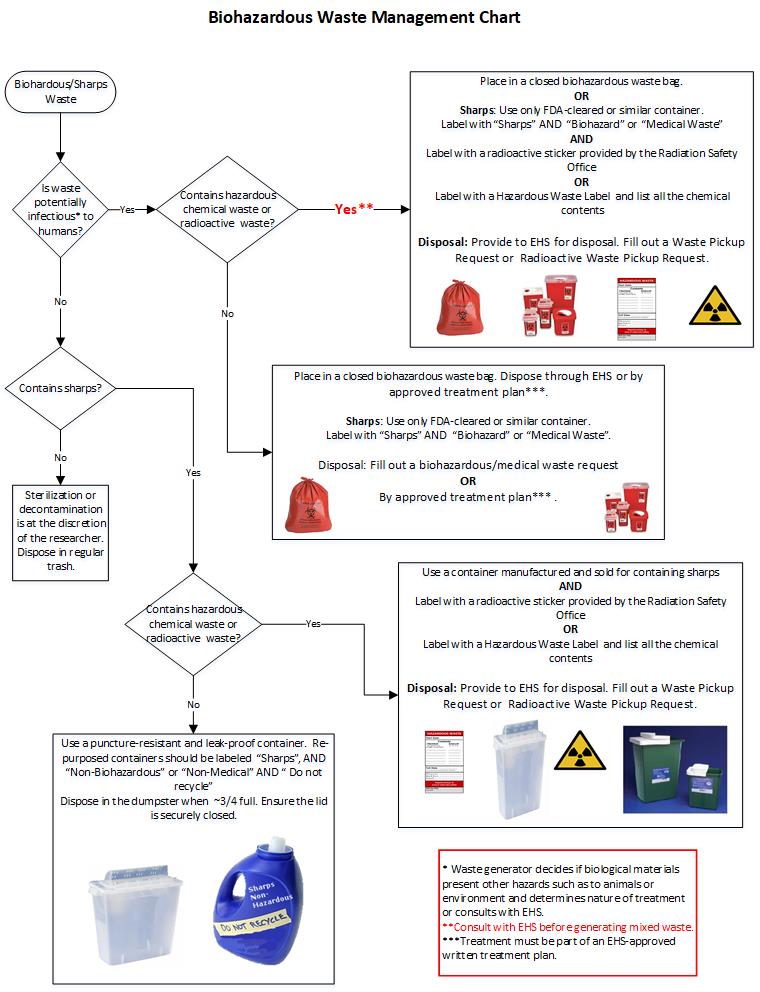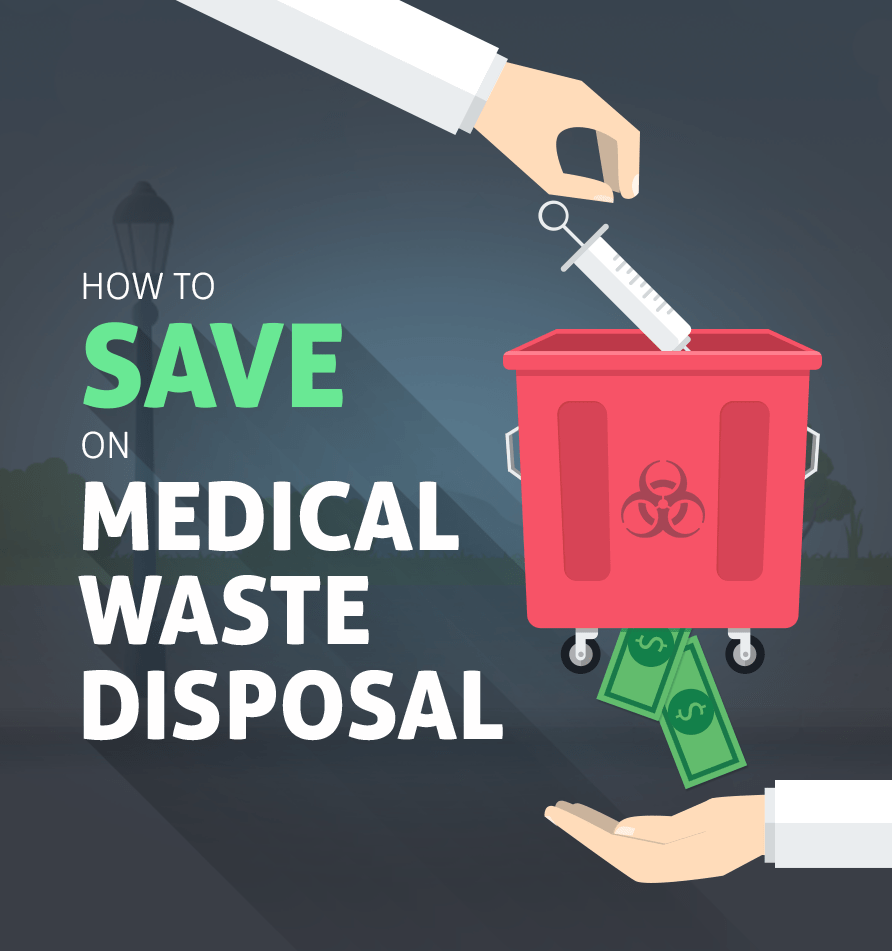Ideal Practices for Medical Waste Administration
Clinical waste management is an essential aspect of medical care centers' operations to guarantee the security of patients, team, and the atmosphere. Executing finest techniques in clinical waste management is important to reduce the threats associated with contaminated materials. This consists of appropriate segregation and classification of waste, guaranteeing its safe storage space and labeling, sticking to regulative standards, and making use of efficient disposal methods. By adhering to these best methods, medical care centers can decrease the possibility for infections, injuries, and air pollution triggered by improper handling and disposal of clinical waste. This intro aims to supply an introduction of the relevance of ideal practices for clinical waste monitoring and the subsequent sections will dive right into each practice in information - medical waste removal.

Partition and Classification
In the field of medical waste monitoring, correct partition and classification are crucial practices for ensuring the safe and efficient disposal of healthcare-related materials. Clinical waste is produced from various resources, including healthcare facilities, centers, labs, and various other medical care centers. It includes a vast array of items, such as needles, syringes, plasters, gloves, and pharmaceutical waste.
Segregation includes the organized separation of various kinds of medical waste based on their qualities and possible threats. This procedure helps to avoid cross-contamination and makes sure that each type of waste is taken care of suitably. As an example, sharps waste, such as blades and needles, need to be positioned in puncture-resistant containers to stop injuries and the spread of contagious diseases. Infectious waste, such as blood-soaked plasters or societies, ought to be segregated and dealt with individually to lessen the danger of spreading out pathogens.
Classification is the procedure of categorizing clinical waste right into different groups based upon its possible risks. These classifications might consist of transmittable waste, hazardous waste, pharmaceutical waste, and basic waste. By classifying waste, healthcare centers can establish the proper disposal techniques and make certain conformity with regional guidelines and standards.
Appropriate partition and categorization of medical waste not only protect the health and safety and security of health care workers and the general public but also add to the general efficiency and efficiency of waste management. It reduces the danger of accidents, decreases ecological impacts, and promotes responsible waste disposal methods.
Correct Storage and Classifying
To ensure the reliable and risk-free disposal of clinical waste, healthcare centers have to follow correct storage space and labeling practices. WasteX Medical Waste Disposal. Correct storage and labeling play a vital function in maintaining the integrity of medical waste management systems and safeguarding the health and wellness and security of healthcare employees, clients, and the public
When it concerns storage, it is vital to have actually designated areas specifically made for different sorts of clinical waste. These locations must be protected, well-ventilated, and equipped with appropriate containers that meet governing standards (medical waste removal). Partition and categorization of waste must also be considered to avoid cross-contamination and possible dangers

Regular tracking and assessment of storage space locations and containers are important to recognize any kind of concerns or infractions. Team needs to be trained on correct storage space and labeling practices, emphasizing the relevance of compliance with protocols and guidelines.
Safe Transport and Handling
Making sure the proper and safe transport and handling of clinical waste is vital for keeping the honesty of waste administration systems and protecting the health and safety of all entailed. Medical waste, which includes items contaminated with transmittable products, drugs, and various other unsafe substances, should be delivered in a fashion that prevents leakages, spills, and possible contamination.
It is important to make use of puncture-resistant and watertight containers that are specifically designed for clinical waste. Additionally, waste should be segregated based on its nature and type to stop cross-contamination.
During transportation, it is vital to make certain that waste containers are firmly attached and kept in a steady manner. Vehicles made use of for transferring clinical waste must be equipped with suitable safety and security functions, such as spill containment systems, to minimize the danger of any kind of spills or leaks. Chauffeurs ought to get training on appropriate handling and emergency situation reaction treatments to efficiently attend to any kind of unexpected incidents.
Additionally, the transport and handling of medical waste should adhere to all relevant regulations and guidelines established forth by neighborhood, state, and federal authorities. WasteX Medical Waste Disposal. medical waste removal service. Regular assessments and audits need to be carried out to examine conformity and recognize any kind of areas for renovation
Conformity With Regulatory Guidelines
Keeping compliance with governing guidelines is important for efficient clinical waste management. These standards are placed in place to safeguard public health and wellness and the setting by making certain that clinical waste is appropriately taken care of, treated, and disposed of. Conformity with regulatory standards assists to avoid the spread of infectious conditions, reduce prospective hazards, and reduce the general effect of medical waste on the atmosphere.
To attain compliance, medical care centers have to remain informed concerning the particular laws governing medical waste management in their territory. These policies may vary from nation to country, and even within different states or areas. It is necessary for health care centers to have a detailed understanding of these standards and to implement suitable strategies and methods to make sure compliance.
One trick facet of compliance is the appropriate partition and labeling of various sorts of clinical waste. This consists of dividing sharps from various other waste, as well as categorizing waste based upon its possible threats. Healthcare facilities have to also make sure that medical waste is kept in suitable containers and that these containers are correctly classified and sealed.
Furthermore, compliance with regulatory standards needs health care centers to establish appropriate training and education and learning programs for personnel participants associated with clinical waste administration. This consists of supplying training on waste segregation, handling, and disposal procedures, along with the appropriate usage of personal protective equipment.
Routine surveillance and audits are likewise necessary to guarantee continuous compliance with regulatory standards. This entails performing normal inspections of waste storage areas, recording waste monitoring treatments, and preserving records of garbage disposal.
Reliable Disposal Approaches
Healthcare centers need to use effective disposal methods for correct administration of clinical waste. Inappropriate disposal of medical waste can pose significant health and wellness and ecological dangers. There are several methods that can be utilized to properly deal with medical waste, making sure the safety and security of health care workers, people, and the general public.
One frequently used technique is incineration. Incinerators can securely melt medical waste at high temperature levels, minimizing the quantity and ruining any kind of potentially hazardous virus. However, incineration can be costly and may launch damaging contaminants into the air otherwise appropriately controlled.
Another go now approach is autoclaving, which includes subjecting the waste to high-pressure vapor. This process eliminates bacteria, infections, and various other bacteria, providing the waste safe for disposal in normal waste streams. Autoclaving is a environmentally pleasant and effective approach, however it requires customized tools and trained personnel.
Chemical sanitation is additionally used in some instances, where fluid chemicals are related to the waste to disinfect it. This method is less commonly utilized as a result of issues regarding the performance of chemical sanitation and the capacity for chemical residues to pollute the environment.
In addition to these approaches, medical care centers need to additionally implement proper partition, packaging, and labeling of clinical waste to guarantee its safe handling and disposal. Normal training and education and learning of personnel on correct waste administration practices are vital to maintaining reliable disposal techniques.
Verdict
Finally, implementing best practices for medical waste administration is essential for making sure the safety of medical care workers, clients, and the environment. By correctly segregating and classifying waste, keeping and classifying it appropriately, guaranteeing risk-free transportation and handling, complying with regulative standards, and utilizing effective disposal techniques, health care centers can efficiently handle and lessen the threats connected with medical waste. It is crucial for medical care companies to prioritize and stick to these best practices to keep a sustainable and secure health care atmosphere.
Medical waste management is a critical element of health care centers' procedures to make certain the safety of individuals, staff, and the setting. Implementing finest techniques in clinical waste monitoring is crucial to minimize the threats linked with dangerous waste. These categories may consist of infectious waste, harmful waste, pharmaceutical waste, and basic waste.In conclusion, implementing best techniques for clinical waste administration is important for ensuring the security of healthcare employees, individuals, and the atmosphere. By properly setting apart and classifying waste, storing and classifying it properly, guaranteeing safe transportation and handling, conforming with regulative standards, and utilizing reliable disposal methods, healthcare centers can efficiently handle and minimize the threats associated with medical waste.